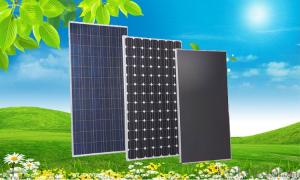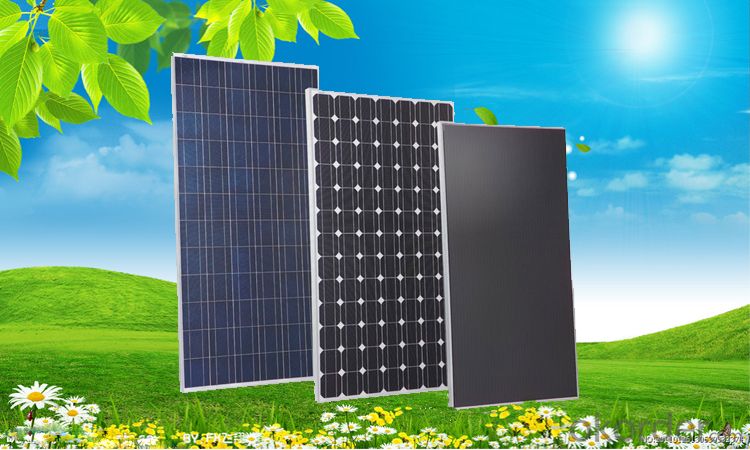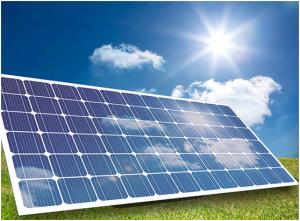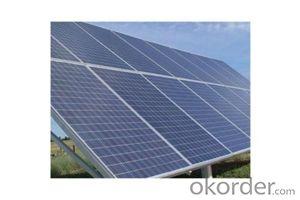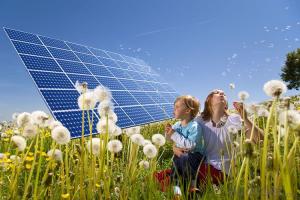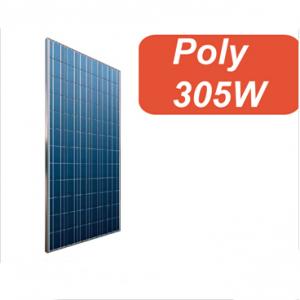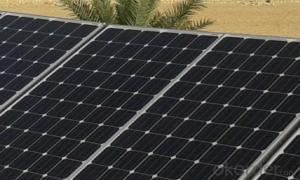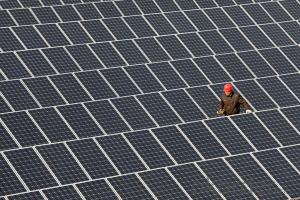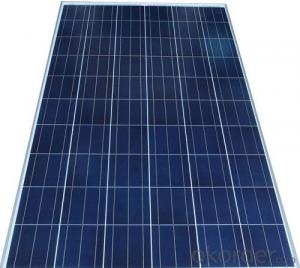High Efficiency 285W Polycrystalline Solar Panel - Hot Selling Supplier of Solar Panels
- Loading Port:
- China main port
- Payment Terms:
- TT OR LC
- Min Order Qty:
- 285 watt
- Supply Capability:
- 200000000 watt/month
OKorder Service Pledge
OKorder Financial Service
You Might Also Like
1. Detailed Information
Type | CNBM Solar Polycrystalline Series II (285W) | ||
Materials | Silicon | ||
Size | Length | Width | Height |
1954 | 982 | 45 | |
Guarantee | 12 yrs free from defects in materials and workmanship No less than 90% within 10yrs and no less than 80% within 25yrs TUV(IEC61215&IEC61730), CE, UL | ||
Application | Photovoltaic/ solar/ green energy/ energy saving | ||
Descriptions | 1.High efficiency crystalline silicon solar cell. Even if under the weak light, the solar module can produce maximum power output. 2.Tempered glass (toughened glass): Anti-reflecting coating and high transmission rate glass increase the power output and mechanical strength of solar module. 3. EVA and TPT: Using high quality EVA and TPT to prevent destroying and water. 4. AI frame: Without screw, rner connection. 6 holes on the frame can be installed easily. 5. Junction box: Multi function junction box with water proof. 6. Long lifetime: ≥25 years; Less power decrease. 7. Good performance of preventing from atrocious weather such as wind and hails. 8. Resisting moisture and etching effectively, not effected by geology. 9. The certificate issued by international authority: UL, TUV, IEC, CE.
| ||
Packaging Details: | 26pcs/pallet, 28pallets/ 40HQ Our solar panels are packed in cartons, and then pallet. Shipping by sea or by air are both ok, it up to customer’s chose. We’d like to inquiry the freight cost for customer after be informed exact quantity and destination address. | ||
2. Technology
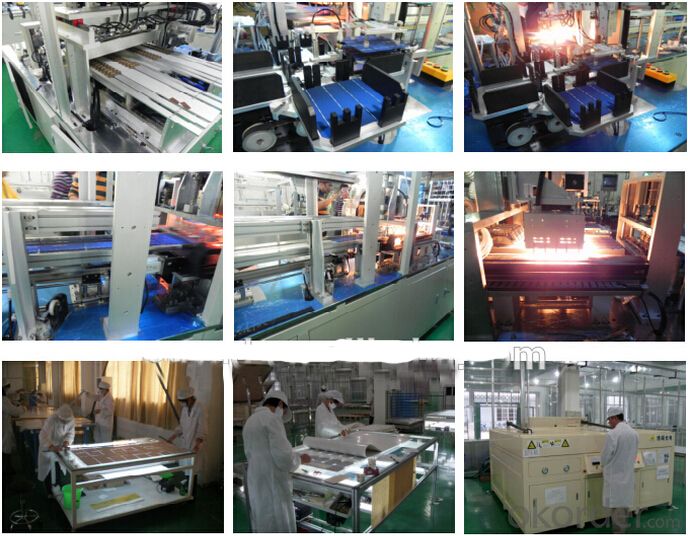
3.The picture of the products
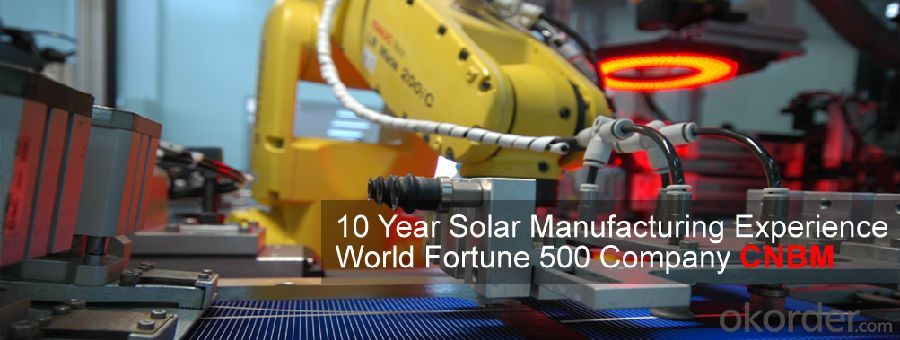
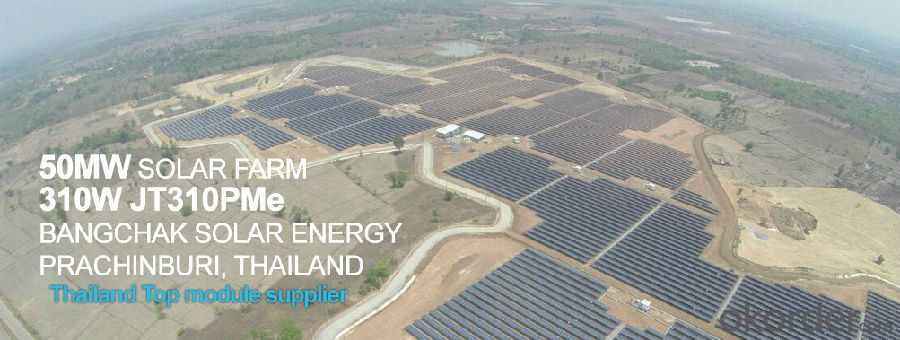
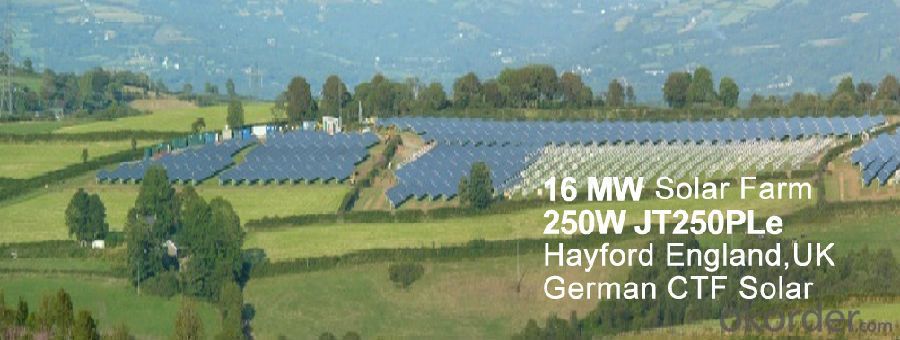
4.Packing Details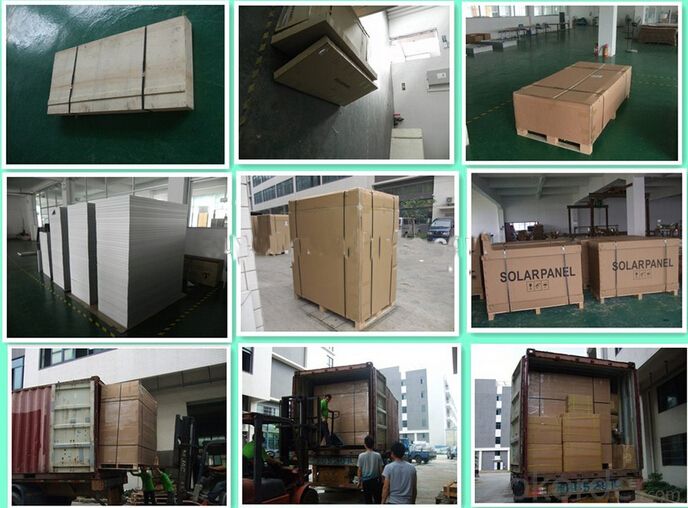
5. FAQ:
We have organized several common questions for our clients,may help you sincerely:
1). What’s price per watt?
A: It’s depends on the quantity, delivery date and payment terms of the order. We can talk further about the detail price issue. Our products is high quality with lower price level.
2). Can you tell me the parameter of your solar panels?
We have different series of cells with different power output, both from c-si to a-si. Please take our specification sheet for your reference.
3). How do you pack your products?
We have rich experience on how to pack the panels to make sure the safety on shipment when it arrives at the destination.
4).Can you do OEM for us?
Yes, we can.
- Q: Making a solar panelI know there was a recommended wattage for the soldering iron but i cant rememberdoes anyone know?
- Temperature controlled soldering irons like Weller are best. They don't burn up if left turned on.
- Q: Hi, I have in my sailboat 2 2 V batteries. I would like to buy solar panel(s) in order to recharge them. As i am in mexico and there is always high sun . i think it is a good idea.Usage of the batteries is very light . I have found 5-2V pannels with 80mA that fit in the sailboat. I want to know if and how i can have like 5 to 0 of them set together to charge the batteries and what other material would i need.also, i would like to know what happend if the pannels only send on 5V in a 2 V battery? Is it still charging but on 40 % of the capacity a 2 v pannel would charge or its just not doing nothing ?
- Taken at face value, it would take about 55 hours to re-charge a dead flat battery. However, you don't get 24hrs/day sunlight. Even worse, the output from a panel is only maximum when the sun is at 90 degrees to the surface. Let's assume you can find some way to track the sun. No battery should be allowed to discharge below about 50% so we can halve the recharge time. I would say about 4 days.
- Q: Can solar panels be installed on carports or pergolas?
- Yes, solar panels can be installed on carports or pergolas. In fact, these structures provide an ideal space for solar panel installation as they offer ample sun exposure and can optimize energy generation while providing shade or protection for vehicles or outdoor spaces.
- Q: Can solar panels be damaged by hail or other weather conditions?
- Yes, solar panels can be damaged by hail or other severe weather conditions such as strong winds, heavy rain, or snowstorms. Hail can cause cracks, dents, or shattered glass on the surface of the panels, reducing their efficiency or rendering them completely ineffective. Additionally, extreme weather events like hurricanes or tornadoes can also cause structural damage to the mounting system or dislodge the panels from their position. Therefore, it is important to consider the weather conditions in a particular location and choose appropriate measures to protect solar panels from potential damage.
- Q: I thought that I had a fairly good understanding of watt's law, but i'm starting to doubt myself.If I have a load of 4500watts at 240 volts, how many watts of solar panels do I need, if the solar panels are at 2v?Yes, Yes... I have a charge controller, batteries, etc...So the way I looked at this at first:watts = volts * amps For the load4500 = 240 * xx would be 8.75aFor the power source (each solar panel)00 = 2 * xx would be 8.3a8.75 / 8.3 = 2.25, rounded up = 3So... based on that I came to the conclusion that I needed 3 solar panels...But... then I was thinking. Does it work that way?Or do I need 4500 / 00 = 45, aka 45 solar panels?In other words...If I have a 2v power source, how many watts do I need to drive a load of 4500w at 240v?ThanksMatt
- You okorder / Solar Pro Magazine another of their publications
- Q: Can solar panels be installed on a theme park or amusement park?
- Yes, solar panels can be installed on a theme park or amusement park. In fact, many theme parks around the world have already installed solar panels to generate clean and renewable energy. This not only helps to reduce their carbon footprint and dependence on fossil fuels but also saves them money on electricity bills in the long run. Additionally, solar panels can be integrated into the design of the park, complementing its aesthetic appeal and showcasing the park's commitment to sustainability.
- Q: How do solar panels affect insurance rates?
- Solar panels can generally have a positive impact on insurance rates. While the installation of solar panels may slightly increase the dwelling coverage, the potential savings on electricity bills and the added value to the property can often outweigh any additional costs. Additionally, some insurance companies offer specialized policies and discounts for homes with solar panels, making it a favorable choice for homeowners.
- Q: Can solar panels be installed on bridges or highways?
- Yes, solar panels can be installed on bridges or highways. In fact, many countries have started implementing solar panels on such structures to harness solar energy and generate electricity. This integration of renewable energy technology with infrastructure not only helps produce clean energy but also optimizes space utilization and promotes sustainability.
- Q: Due to erratic power cuts in my area I want to make up by using a 30watt solar panel. My decoder is 30watt but my TV is 70W. I need something small. I don't have problem with sound. Just picture.
- Do what we do when power is cut (although we have very reliable power - we loose as much as 2 hours a year), is go Amish. That is go without powered technology. Now, for you, you need more than a solar panel (and likely more than 30W, but that is a start) - you need a battery or set of batteries to store the collected power. 20Ah might do. You need an inverter to power things. For that, likely a 300W will do. For a TV, go shopping, and look at the labels on the back of the TVs. I just bought a 24 TV rated at 40W. If you get a 9 LED TV, it may be likely you can run that directly from battery, for many have separate DC brick supplies. With those, you can make a cable to power it directly from a 2V or so battery, if the supply can make 2 to 5V. Depending on your provider, you may be able to get a mini-decoder which uses a separate brick or wall supply, which means the decoder likely can be directly battery powered. Such a decoder may draw less than 20W.
- Q: Are solar panels noisy?
- No, solar panels are not noisy. They operate silently as they convert sunlight into electricity without any moving parts.
Send your message to us
High Efficiency 285W Polycrystalline Solar Panel - Hot Selling Supplier of Solar Panels
- Loading Port:
- China main port
- Payment Terms:
- TT OR LC
- Min Order Qty:
- 285 watt
- Supply Capability:
- 200000000 watt/month
OKorder Service Pledge
OKorder Financial Service
Similar products
Hot products
Hot Searches
Related keywords
